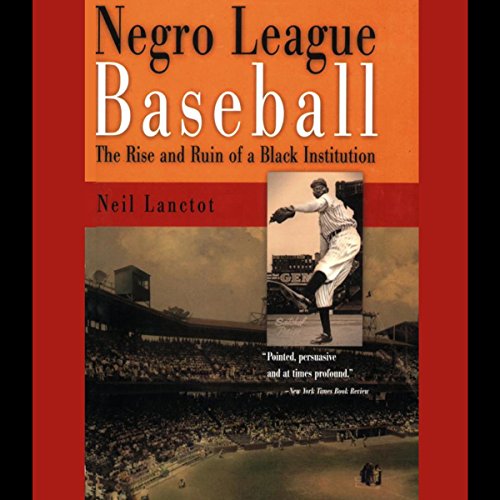Neil Lanctot’s “Negro League Baseball” is the definitive history of Negro League Baseball in the United States. The author maps out the rise of this once beloved enterprise, the growing pains along the way, and its ultimate demise after Jackie Robinson finally broke the color barrier. Black entrepreneurs such as Cumberland “Cum” Posey, Gus Greenlee, Rube Foster, Abe Manley, and Ed Bolden created a league that played a positive social and economic role in black communities.
While Major League Baseball banned the participation of many talented black athletes for decades, the Negro Leagues were more diverse and succeeded with white American business man J. L. Wilkinson, who owned the prized Kansas City Monarchs for decades, and also served as secretary for the Negro National League. Effa Manley (Abe’s wife), who may have identified herself as black, was a successful white executive with the always competitive Newark Eagles.
The negro teams played lucrative games against semi pro and professional white teams, and rented Major League stadiums owned by white baseball owners that excluded blacks from playing in their league. The annual East West All-Star game played at Comiskey Park in Chicago, became a financial success for Negro League Baseball. The game was attended by more than 50,000 rapid fans in 1941 and 1943, and managed to survive until the 1960s.
Lanctot does an outstanding job of establishing the league’s hardships during the great depression, and the resiliency the league demonstrated during the war years. Despite the mounting restrictions on fuel and tires, the league preserved, even surviving while players were serving their country. Segregation forced teams to travel by bus, often times being denied service at restaurants, and being unable to find hotels that would allow them to rent rooms.
“Negro League Baseball” traces the path to integration, when the status quo finally struck out. The author superbly breaks down the social, cultural, and economic impact of integration. Many negro players were plucked from the Negro League’s without properly compensating the owners. The often outspoken Effa Manley voiced her dissatisfaction when she was forced to sell a player for $5,000, when the same player would have been purchased for $100,000 had they been white.
Lanctot writes the final chapter on Negro League Baseball, but not before future hall of famer’s Willie Mays, Ernie Banks, and Hank Aaron came through the circuit. Teams sold players to just to survive, but ultimately, couldn’t replace the talent being absorbed into the Major Leagues. In survival mode, many owners turned to gimmicks, such as featuring women, midgets, and clowns to attract an audience. The author puts the legacy of Negro League Baseball into proper perspective.
The book was published by The University of Pennsylvania Press
By: Neil Lanctot
Narrated by: Todd Barsness
Length: 19 hrs and 16 mins
Release date: 01-10-13


